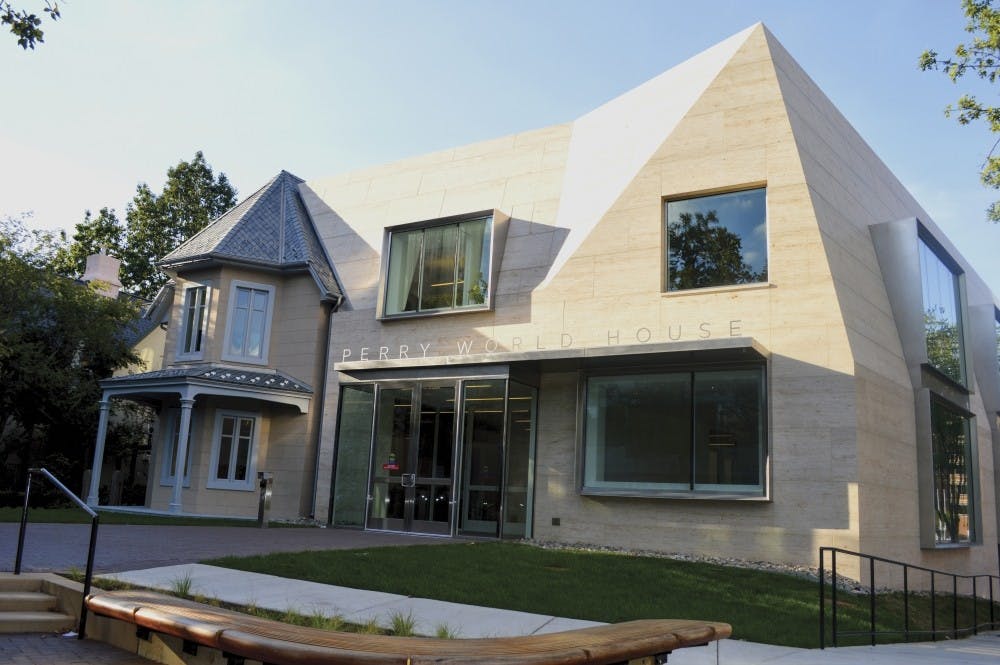Nearly two years ago, Penn’s $17.8 million investment opened: Perry World House. As a hub for global policy research, the white washed walls opened the forum to discussion of international affairs and invitations to esteemed guests, such as the United Nations Commissioner for Human Rights, Zeid Ra’ad Al Hussein, and Russian opposition journalist, Yevgenia Albats. Such a global nature of the space, too, is reflected in the art accompanying the building.
One such peace is a photograph of the Korean Demilitarized Zone. Spread across the building’s entrance, the photo, taken with a long exposure over eight hours, is representative of the apparent calmness that masks the potential destruction caused by the landmines in the world.
Another is a photograph by Iranian filmmaker and photographer Shirin Neshat, featuring a woman in a partial hijab. Tiny words written in Farsi blanket the entire image. “It’s the story of freedom,” Perry World House Director William Burke–White told Penn Today. “Art speaks to all of the challenges we have in society and everything we do in an education institution.”
Past the atrium, up the main stairwell is “Common History: Totem,” a bright acrylic piece by contemporary artist Michael Craig–Martin. The bright colors may not seem like they are related to global affairs, but they do evoke cultural movements across the world. Craig–Martin, who is marked by his use of bright and playful candy colors, in his work, references the art movements of Dadaism and Minimalism as inspiration and emphasizes how they depict mass–produced objects. Represented in lurid, unexpected color combinations, the boundaries of which are defined in black, the objects are a graphic representation of the realities of the world. “It’s fun,” Lynn Marsden–Atlass, University Curator, said. “He does a visual riff of 20th century art and makes reference to artists Marcel Duchamp (Fountain) and Rene Magritte (The Treachery of Images).”
All of these pieces were chosen by Richard Perry, Penn alum and a member of the University’s Board of Trustees, in working with Burke–White, Amy Gutmann, and Marsden–Atlass. “I tried to focus on artists from all around the world,” Perry said, naming their many countries of origin, including England, France, Korea, Japan, India, Iran, as well as the United States. “I feel it can be a little bit of home for visiting students or teachers or whoever happens to come into the building.”
The art in Perry World House is a reminder of how it shapes and is shaped by its environment. Especially at a time of increasing ideological division and the politicization of policy making, the intentions behind the choices of artwork can serve as a unifying force connecting people. Introduced wisely, it can make us respect diverse cultures. The inclusion of artworks from all around the world also fits the hallmark of Penn, that is its interdisciplinary nature. Drawing on the wide range of expertise across Penn’s twelve schools, the art connects Penn to policymakers, practitioners, and researchers from all around the world to develop and advance innovative policy proposals.
Art as a whole is molded according to its environment and, in the Perry World House, there is nothing better to remind those who enter its glass–doors of its original objective.







